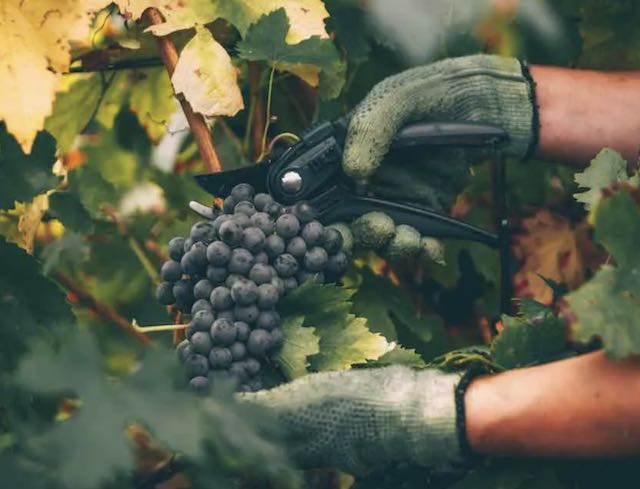Harvesting Quality FruiT (Western Agricultural Research Center - MSU)

Harvesting Methods
While there are a number of mechanical harvesting methods that can be useful for larger operations, we will focus on hand-harvesting techniques, as most of the vineyards in Montana operate on a smaller scale.
Aim for harvesting on a cool, dry day, as dry grapes will store longer than wet grapes. Equipment—harvest bins, clippers, etc.—should be clean, sharp, and ready for action. Label bins or other storage containers to keep varieties organized. If you’re not planning to transfer your harvest immediately to a buyer or another location for processing, prepare an adequate storage space for your loaded bins.
There are a couple different harvesting tools to choose from. One option is to use sharp pruning shears/clippers (we prefer the more scissor-like trimmers with narrow tips) rather than pulling clusters by hand, as this will ensure you’re not damaging the vine or knocking off other clusters. Another handy and potentially safer harvesting tool is the “grape fork” or razor.
To pick a cluster with either tool, hold a cluster with one hand and clip/cut just above each cluster on its small stem, or “peduncle.” Assess the cluster and pluck out any diseased/rotten fruit or insects (a good use of the narrow-tipped shears). Watch for for Asian Lady Beetles, as merely one crushed beetle in a wine must can send the whole batch off flavor. If you’re harvesting table grapes, you may want to take more time with this step, plucking out any shrivelled or unappealing berries (or add this step to the processing phase). When the cluster passes your inspection, toss it in the bin and move on to the next cluster. Keep bins out of direct sunlight, preferably in a cooler, shady area during harvest.
This video offers a quick overview of grape harvesting: Harvesting Grapes (VIDEO, Minnesota Grape Growers Association).

